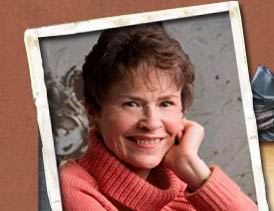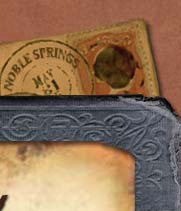DECEMBER ON THE OREGON TRAIL
Sometime back, a friend and I were discussing my upcoming novella, State of Matrimony, to be included in the Oregon Trail Romance Collection from Barbour--release date April 2015. Since my great-grandparents came west on the Oregon Trail, my friend asked me what Christmas on the Trail would have been like. I replied that most emigrants traveling west made every effort to reach their destinations long before Christmas. Typically, families would depart from Missouri in April or May, and allow six months for the journey. Thus, they'd arrive in the fall, hopefully well before snow fell in the mountains.
However, my great-grandparents, William and Harriet Kirk, weren't typical emigrants. They had limited funds to cover the entire journey--think ferry charges, food supplies, animal feed, etc.--so they stopped along the way to allow my great-grandfather to find work. He was an expert at handling horse teams, and most often sought jobs with the railroad lines that were pushing westward at a rapid pace. They left Missouri on May 12, 1882, as part of one of the last great wagon train migrations. Their family consisted of themselves and their six children, who ranged in age from 14 (my grandfather, James) down to a two-year-old.
When the fall of 1882 arrived, instead of hastening west they turned north into Montana. Here's their story, taken from my grandfather’s memoirs:
In September they arrived in Missoula, Montana, where the Northern Pacific Railroad was under construction. William Kirk stopped the family at a railroad construction camp about twenty miles northwest of Missoula, just inside the Flathead Indian Reservation (now called the Confederated Salish and Kootenai Tribes). William did team and scraper work grading the roadbed for three or four weeks, then moved to another railroad site in October for a few more weeks.
In November, they packed up and moved farther northwest to another grading job. The family set up camp on the Clark Fork River, not far from the Idaho line and about sixty miles from Missoula, still on the reservation. William and James worked on railroad construction in a narrow valley following the river until the grading was finished, well into the winter. William then spent the rest of the winter hauling freight from Missoula to railroad camps where rock work was being done along mountainsides. My grandfather remembered the temperature dropping to as much as 40 degrees below zero part of the time.
And where was the rest of the family--Harriet and the five younger children--while husband and eldest son were on the road? They were living in a tent on the Flathead Indian Reservation. I'm assuming it was a canvas wall tent, similar to those used during the Civil War. At most, it probably would have measured 12 x 14 feet. To give you an idea, although the snow isn't as deep, above is a photo of our tent taken during one of my husband's elk hunting trips. Picture six to eight people living inside for five months during a Montana winter.
They had a little camp stove for cooking and heat, which kept them warm until the fire went out during the night. James remembers waking some mornings to find that water left warming on the stove when they went to sleep had frozen solid.
My grandfather's memoirs are filled with events he witnessed during that winter. Perhaps in another blog I'll share more of his story. Unfortunately, he didn’t mention Christmas at all, which leads me to believe it was a very limited celebration.
Under these conditions, Harriet would have done what she could to create a Christmas celebration for her family. Since William and James had access to supplies from Missoula, she had necessary staples to supplement the wild game her husband and son furnished. Perhaps their Christmas dinner consisted of a venison roast, or a roasted wild turkey. Given what she had to work with, there would have been potatoes, biscuits, gravy, and perhaps a precious orange or two from Missoula. This photo from Sunset Magazine helps me to picture my great-grandfather returning to the family tent with Christmas supplies.
What if Harriet brought carefully packed jars of canned mincemeat or
berry jam from home? Spices also travel well--cinnamon, cloves, or
nutmeg would flavor sugar cookies. She may have stayed awake after the
children were asleep to knit mittens or hats for them. Would William
have brought any toys or books from Missoula as gifts? I wish I knew.
For the sake of this different Christmas story, we'll picture the
family together, warm, and well-fed in their tent on that special day,
and let our imaginations fill in the gaps.
What do you think they may have done to make the day special? I'd love to hear your thoughts.
Monday, December 1, 2014
Subscribe to:
Posts (Atom)














